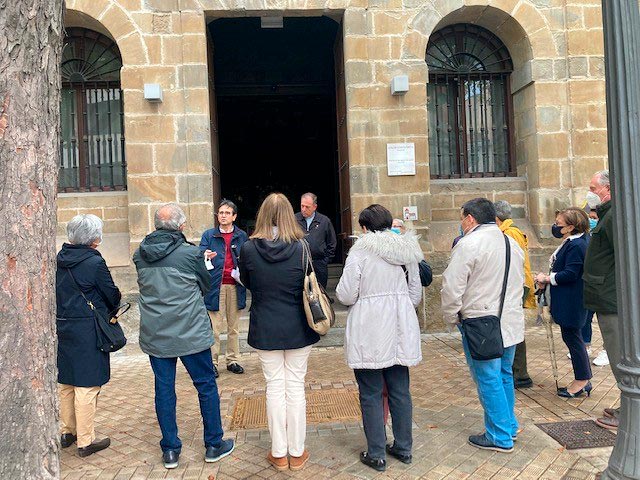5 October
In the footsteps of Ignatius: the basilica
Ricardo Fernández Gracia
Chair of Navarrese Heritage and Art
Anyone who stands in front of the Basilica of San Ignacio in Pamplona can evoke the important changes that have taken place in the building and in this part of the city over the last five centuries in relation to the reportand historical awareness of the founder of the Jesuits in the capital of Navarre.

The place itself recalls the place where the saint was wounded quite precisely, next to the castle. It also alludes to the location of the first report, in the form of a triumphal arch, erected at the beginning of the 17th century, at a time of transformation of that place, with the construction of the convent of San José de las Carmelitas Descalzas and the "construction" of the process that would bring the saint of Loyola to the altars. The second half of the seventeenth century saw the architecture of the current basilica, erected at the behest of Don Diego de Benavides, Count of Santesteban, Viceroy of Navarre between 1653 and 1661, from where it passed to Peru under the same name position. In the latter viceroyalty he made contact with some Navarrese Jesuits who collected donations that were sent to build a monument to the saint, in memory of his wound in the defence of the castle of Pamplona.
Without entering the building and opening the gate, we can see that in the first half of the 18th century, the time of the triumph of decoration, the complex underwent a transformation, with rich plasterwork and a fashionable altarpiece. The mastery of ornamentation is also evident in the large central coat of arms on the façade. The latter also bears witness to the departure of the Jesuits and their expulsion and suppression, as the central motif containing the IHS, the emblem of high school, has been shaved off.

The traces of the 19th century are evident in the Diputación palace building and those of the 20th century in the mutilation of the complex: in 1927 for the straight alignment of the Avenida de San Ignacio, at the cost of a large part of the building; the extension of the Diputación with the office block in 1965 next to the basilica, which makes the latter go almost unnoticed; and finally the monument to Saint Ignatius (1950 and replaced in 2005), located in the immediate vicinity, as the last witness to the fall of the saint.
AIn spite of everything, a visit to visitto the building is of interest, as today it is the only complex with a large part of its decoration of the Society of Jesus in Pamplona, with the canvases of paintings that arrived from Rome at different times in the 18th century being of particular interest. Ultimately, it is an expression of the cultural, artistic and religious level that the Jesuits reached throughout the 17th and 18th centuries, in a general context and in the particular context of the capital of Navarre.
The virtual visitwhich can be found on the website of the Chairde Patrimonio y Arte Navarro is the best support for the summaryof the lecturegiven. It can be viewed at the following link.
